
views
Physical and Chemical Moss Removal
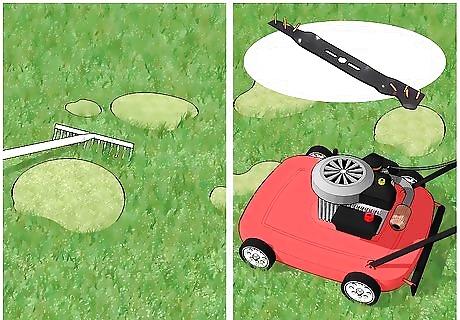
Remove loose moss with scarification. Scarification, also referred to as dethatching, is the process of vigorously raking or agitating the lawn in order to remove loose moss and other compact organic material. If you have a small lawn, you can do this by hand. Simply rake the yard thoroughly and with ample force to lift the moss away. Use a spring-tine rake. If you have a larger lawn, you can get a dethatching blade for your lawn mower. Set the height adjustment so that the tines can touch the surface of the soil, but if you set it too low, you will also remove your grass. Dethatch your entire lawn using this method and dispose of the moss you remove. Alternatively, if you have a larger lawn you can also rent a power rake. These have a rotating spindle with flat blades attached that loosen thatch for clean up. You can rent on from most home improvement stores. It is especially important to dethatch your lawn if you apply a chemical herbicide to kill or weaken moss beforehand. Wait the recommended amount of time as indicated on the packaging before dethatching.
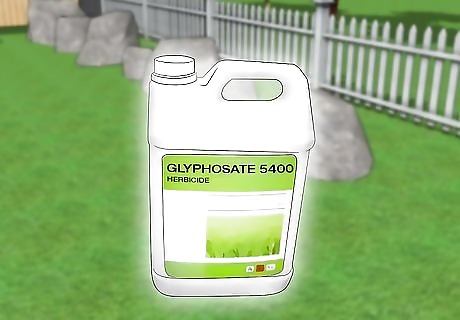
Try a glyphosate herbicide. Glyphosate-based herbicides are among the most popular currently on the market, but they tend to have mixed results when used to kill moss. Please note: The WHO considers glyphosate to be a probable human carcinogen. Its use is prohibited in some states and countries. Please check with your local laws and use caution if handling this chemical. This chemical works by being absorbed through leaves and transferred into the root zone. The exact conditions needed to make glyphosate effective against moss are presently unknown, but for best results, apply the herbicide only if there are no competing plants that the herbicide might go after instead. As with any herbicide, follow the label instructions carefully.
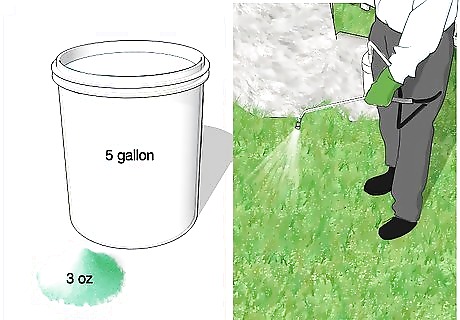
Use iron sulfate or another sulfate-based herbicide. While these herbicides are less common, they tend to have a higher rate of success when used to kill moss. Iron or ferrous sulfate is recommended most often, but ammonium sulfate and copper sulfate herbicides are also effective. Iron weakens the moss, often killing it in the process or making it easier to kill and remove manually. Spray a 5 gallon (20 L) mixture over a 1000 square feet (304.8 square meters) area. The mixture should be about 3 oz (90 ml) of iron sulfate to 5 gallons (20 L) of water. If using copper sulfate, use 2 to 5 oz (60 to 150 ml) for every 4 gallons (16 L) of water, and spray this mixture over a 1000 square foot (304.8 square meter) area. Always follow label instructions carefully.
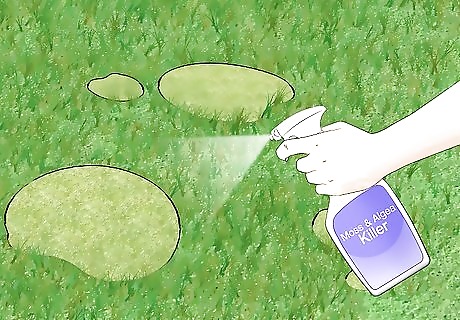
Consider using a moss-killing soap. A cryptocidal soap product kills moss on contact. The chemical bleaches moss, turning it a white-yellow color, and should be applied sparsely. These soaps do not pose any threat to sidewalks or other structures. For best results, apply this treatment during a dry spell, when moss is at its weakest. Carefully follow the instructions on the label when applying. Nitrogen fertilizer that has been properly applied and timed will boost the turf density. Fall and spring are both good times for a light application.
Reducing Moss-Friendly Conditions
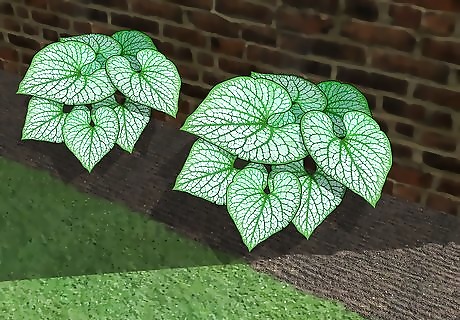
Plant shade-loving perennials and shrubs. Grass does not grow well in areas of heavy shade, but regrettably, moss does. If you cannot control the amount of shade your lawn receives, try planting flowers and other plants that thrive in shaded areas to prevent moss from growing instead. Plants that love shade include astilbe, brunnera, heuchera, hostas, hellebore, ferns, hydrangea, pulmonaria, and tiarella. There are other shrubs and flowers that do well with shade, as well. Simply look for shade-loving plants the next time you visit a gardening store or plant nursery.
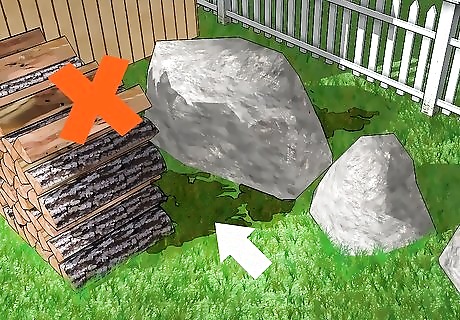
Let the sun shine through. Moss grows well in the shade, but most normal varieties of grass do not. If you want to make your lawn healthier, consider clearing away removable obstacles from your yard so that more natural sunlight can reach your grass. Keep piles of firewood, bricks, or other debris inside storage areas like your garage or garden shed. When building a new shed, think about how the position of the structure may cast shade over the lawn. Trim large trees and heavy shrubs so that more light can peek through.

Avoid watering your lawn excessively. Moss thrives in areas of heavy moisture. If your lawn is doing poorly for other reasons and is already vulnerable to moss, excessive watering will only hasten the arrival of moss. You should especially avoid watering your lawn at night in the early fall or spring, during which moss growth is most persistent. If your lawn is naturally soggy, try improving its ability to drain by changing the grading of the lawn, aerating the lawn, dethatching the lawn, or installing subsurface drain lines.
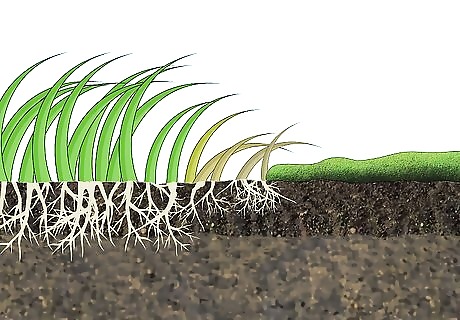
Give your lawn enough water to thrive. While too much moisture will create the ideal conditions for moss, too little moisture can weaken your grass and make your lawn more vulnerable to moss, too. When lawns are too dehydrated, the grass turns brown and weak. It may become too weak to respond to rain or other moisture when it does arrive. As a result, once it rains, the moss grows quickly while the grass continues to die.
Making Your Lawn Healthier

Prevent injuries to your lawn. While most people want to be able to enjoy their lawn, if you treat it too roughly, the grass will become notably weak. As the grass begins dying on its own, you might see more moss creeping in. Lawn injuries can occur when you play sports in the yard, ride a bike in your yard, or have a dog dig through your lawn. Additionally, crane fly larvae can also cause physical injury to your lawn. If you have a lot of crane flies in your area, consider taking measures to exterminate or repel them. Other insects like bill bugs, cutworms, and ants can also cause problems. If you are in the US, check the Department of Agriculture's website for literature regarding insect threats and management in your area.
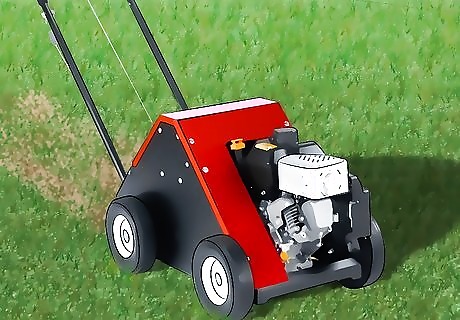
Aerate the area. Over time, your lawn can become too compacted for air, water, and fertilizer to reach the roots of the grass. As a result, the grass can die off and moss can grow in its place. Regular aeration can help control and prevent this, especially when done while the soil is on the dry side. Rent, borrow, or buy a core aerator machine to get the job done. This machine pushes a set of hollow tines into the lawn, digging out small batches of soil less than 1 inch (2.5 cm) wide. By removing cores of soil, you free up just enough space in your yard for the soil to spread out and decompress. Try to do this at least once before the start of the growing season and once before the end of the growing season.
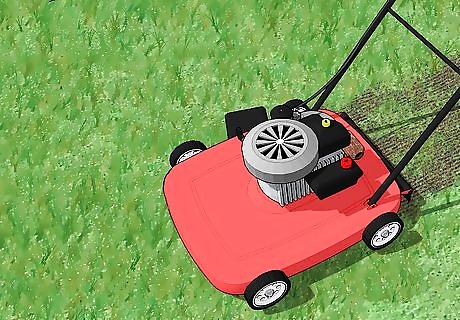
Dethatch your lawn regularly. Dethatching disturbs the lawn more deeply than aeration does. If aeration is done on a regular basis, you will not need to dethatch quite as often. If you have a lot of problems with moss, however, it is still a good idea to go the extra length and dethatch, as well. For best results, dethatch during the spring every other year. A dethatching lawn mower blade digs down into the lawn and yanks up most of the plant material growing in the upper thatch layer of your lawn rather than in the soil. Since this is where moss grows, disturbing the thatch can help prevent moss from settling in.
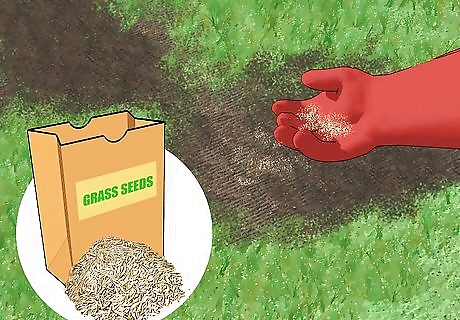
Seed thin areas. If certain areas of your lawn are sparsely covered by grass, planting grass seed in those areas is a good way to prevent moss from covering those areas and improve the overall quality of your lawn. Consider seeding your lawn with a shade-resistant variety of grass. These include ryegrass, fine fescues, roughstalk bluegrass, and bentgrass. Alternatively, you could also look for a pre-packaged mix labeled as "sun-shade" grass seed. When adding new seed, topdress the seeds with 1/4 inch (0.625 cm) of loose soil or sand and keep the area moist until the seedlings establish themselves.

Treat the lawn with fertilizer. Moss can also squeeze its way in if the soil has poor fertility. Poor fertility means that the soil is unable to provide the nutrients needed for grass to thrive. Regular fertilizer is the best way to improve these conditions. You can have a lawn care professional test a sample of your soil from the area where moss grows. In general, though, a good indication that low fertility is your lawn's problem will be if the moss appears in dry, sunny areas of the lawn. Use a fertilizer with a high concentration of nitrogen and decent amounts of potassium and iron. Fertilizer is most helpful when use four times per year: early spring, late spring, mid-summer, and early fall. Try to stay on a regular schedule each season to get the best results.
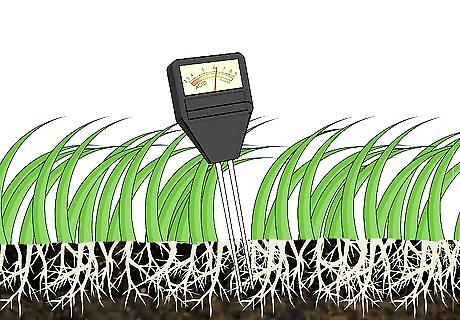
Spread agricultural lime. Lime should be used to control the acidity of your soil. Moss often grows once acidic soil begins limiting the nutrients supplied to your grass, providing room for moss to sneak in. Use a calcium-based lime for best results. Test the pH of you soil. Ideal conditions will be neutral, ranging from 6.5 to 7. If the pH is below 6, it is acidic, and if it is above 7, it is alkaline. Only use lime to treat acidic soil, not alkaline soil. Apply the lime to your lawn twice each growing season if your soil has tested acidic. Do so after dethatching and aerating your lawn. Leave the aeration core plugs on the turf and they will break down and help your soil retain moisture and nutrients.















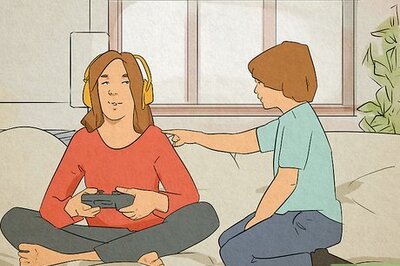

Comments
0 comment